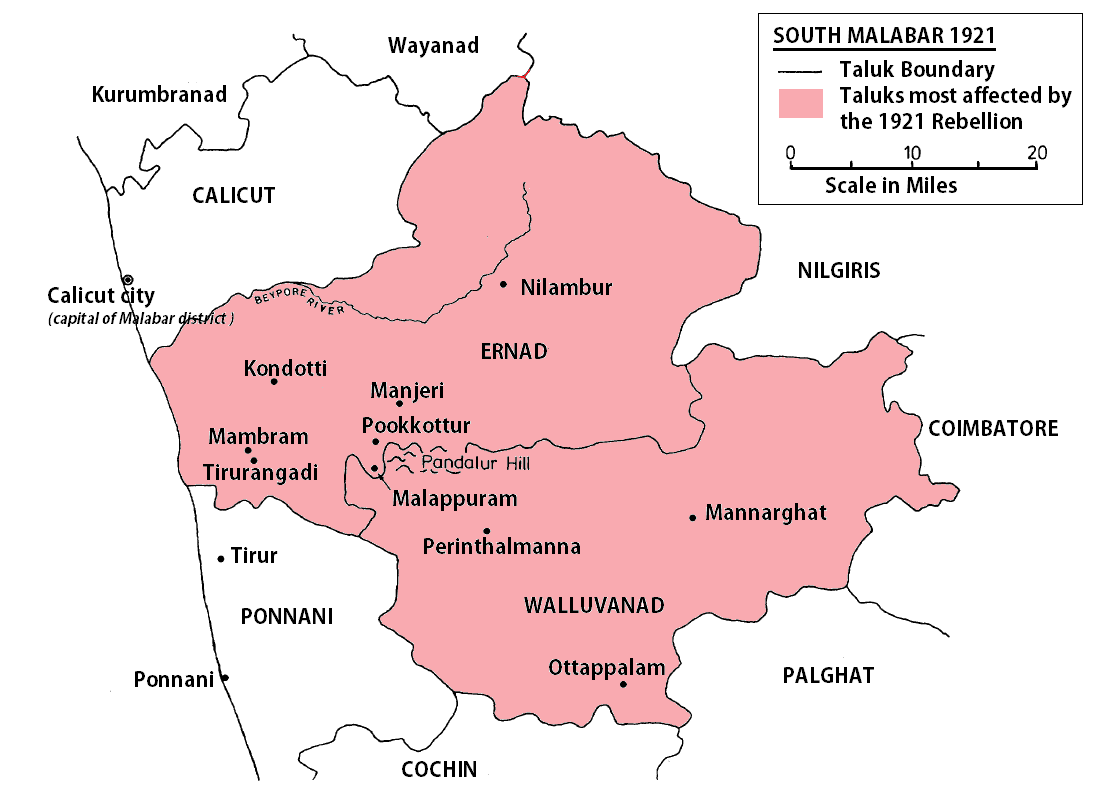MOPLAH REBELLION 1921
Relevance: prelims/Mains: G.S paper I: Modern History

Background of Moplah Rebellion
- Muslims had arrived in Kerala in the 7th century AD as traders via the Arabian Sea even before north India was invaded by Muslim armies from the west.
- They were given permission to carry on trade and settle by the native rulers. Many of them married local women and their descendants came to be called Moplahs (which means son-in-law in Malayalam).

- Before Tipu Sultan’s attack on Malabar, in the traditional land system in Malabar, the Jenmi or the landlord held the land which was let out to others for farming. There were mainly three hierarchical levels of ownership including the cultivator, and each of them took a share of the produce.
- The Moplahs were mostly cultivators of the land under this system and the Jenmis were upper caste Hindus.
- Many Hindu landlords fled Malabar to neighbouring areas to avoid persecution and forced conversions.
- During this time, the Moplah tenants were accorded ownership rights to the lands.
- After the death of Tipu Sultan in 1799 in the Fourth Anglo-Mysore War, Malabar came under British authority as part of the Madras Presidency.
- The British set out to restore ownership rights to the Jenmis who had earlier fled the region.
- Jenmis were now given absolute ownership rights of the land which was not the case previously.
- The peasants were now facing high rents and a lack of security of tenure.
- This caused a series of riots by the Moplahs starting from 1836. Between 1836 and 1896, they killed many government officers and Hindu landlords.

The course of Moplah Rebellion
The Khilafat Movement had started in 1919 in India in support of the restoration of the caliphate in Turkey. The Indian National Congress (INC) was aligned with it.
The Khilafat meetings in Malabar incited communal feelings among the Moplahs and it became a movement directed against the British as well as the Hindu landlords of Malabar.
There was large-scale violence which saw systematic persecution of Hindus and British officials. Many homes and temples were destroyed.
The prominent leaders of the rebellion were Ali Musaliyar and Variyankunnath Kunjahammed Haji.
From August 1921 till about the end of the year, the rebels had under their control large parts of Malabar.
By the end of the year, the rebellion was crushed by the British who had raised a special battalion, the Malabar Special Force for the riot.
In November 1921, 67 Moplah prisoners were killed when they were being transported in a closed freight wagon from Tirur to the Central Prison in Podanur. They died of suffocation. This event is called the Wagon Tragedy.
Consequences of Moplah Rebellion
- The Moplah Rebellion is considered is often considered as one of the first cases of nationalist uprisings in Southern India. However, it is widely debated as a few experts mention the Moplah revolt to have a communal touch. Some say that it has to be considered as the struggle against British supremacy while some mention that it culminated in an Anti-Hindu movement.
- The brutal violence, widespread forceful conversions, and destruction of property suggest that the motive went beyond what could have arisen from class conflict and took on religious colours.
- Sir C Shankaran Nair, a former President of the INC, criticised Gandhi’s support of the Khilafat Movement as one of the causes of the violence.
For more such notes, Articles, News & Views Join our Telegram Channel.
Click the link below to see the details about the UPSC –Civils courses offered by Triumph IAS. https://triumphias.com/pages-all-courses.php

